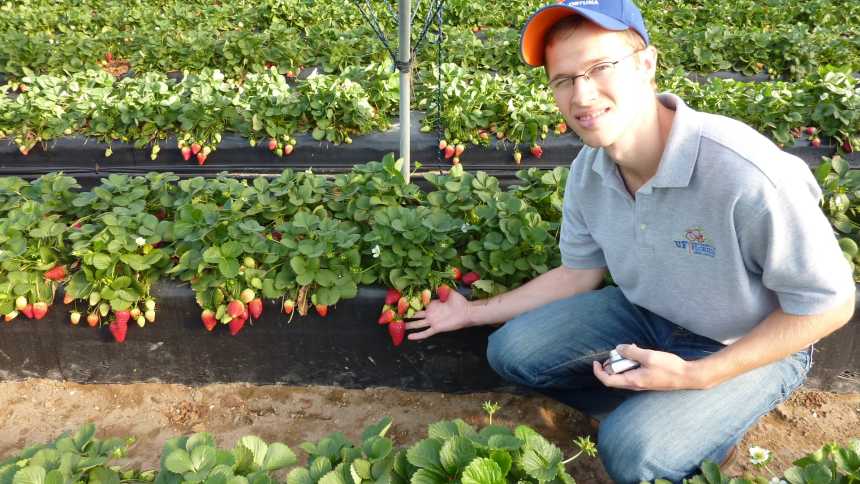Genetics Key To Keeping Strawberry Growers Out Of The Red?

UF/IFAS Associate Professor Vance Whitaker and a team of researchers found genetic markers they believe can lead them to develop strawberry cultivars that are more resistant to angular leaf spot.
Photo courtesy of UF/IFAS
According to a recently published study, a team of researchers has found genetic markers they believe can lead them to develop strawberry cultivars that are more resistant to angular leaf spot, a pathogen that can destroy up to 10% of Florida’s $300 million-a-year strawberry crop in years with multiple freezes. Genetic markers are short sequences of DNA used to identify a chromosome or nearby genes in a genetic map.
In two years of field trials, researchers at the UF/IFAS Gulf Coast Research and Education Center – along with colleagues from Oregon, The Netherlands, and Canada – found places in strawberry genes that show promise for developing cultivars that are resistant to this disease.
“We got closer to finding the exact gene,” said Vance Whitaker, a UF/IFAS strawberry breeder and Extension specialist, who led the study.
UF/IFAS scientists developed a genetic marker that can track the resistance to angular leaf spot during the breeding process with about 95% accuracy. They will use this data to predict which seedlings will be resistant to the pathogen and only test those in the field that should be resistant.
The impacts of the researchers’ findings could stretch far beyond Florida.
Angular leaf spot, caused by the bacterium Xanthomonas fragariae, is the only major bacterial strawberry pathogen, according to the study. It was first described in Minnesota in 1960 and has since been reported in most major strawberry producing regions worldwide. The pathogen is primarily spread by rain or the use of overhead irrigation.
Currently, some growers treat the disease with chemicals containing copper, Whitaker said. Chemical treatments are mildly effective but may result in as much yield loss as the disease itself, he said. Thus, UF/IFAS researchers are looking for strawberry cultivars resistant to angular leaf spot.
Whitaker said it will likely be a few years before scientists can commercialize a strawberry cultivar that is completely resistant to angular leaf spot.









